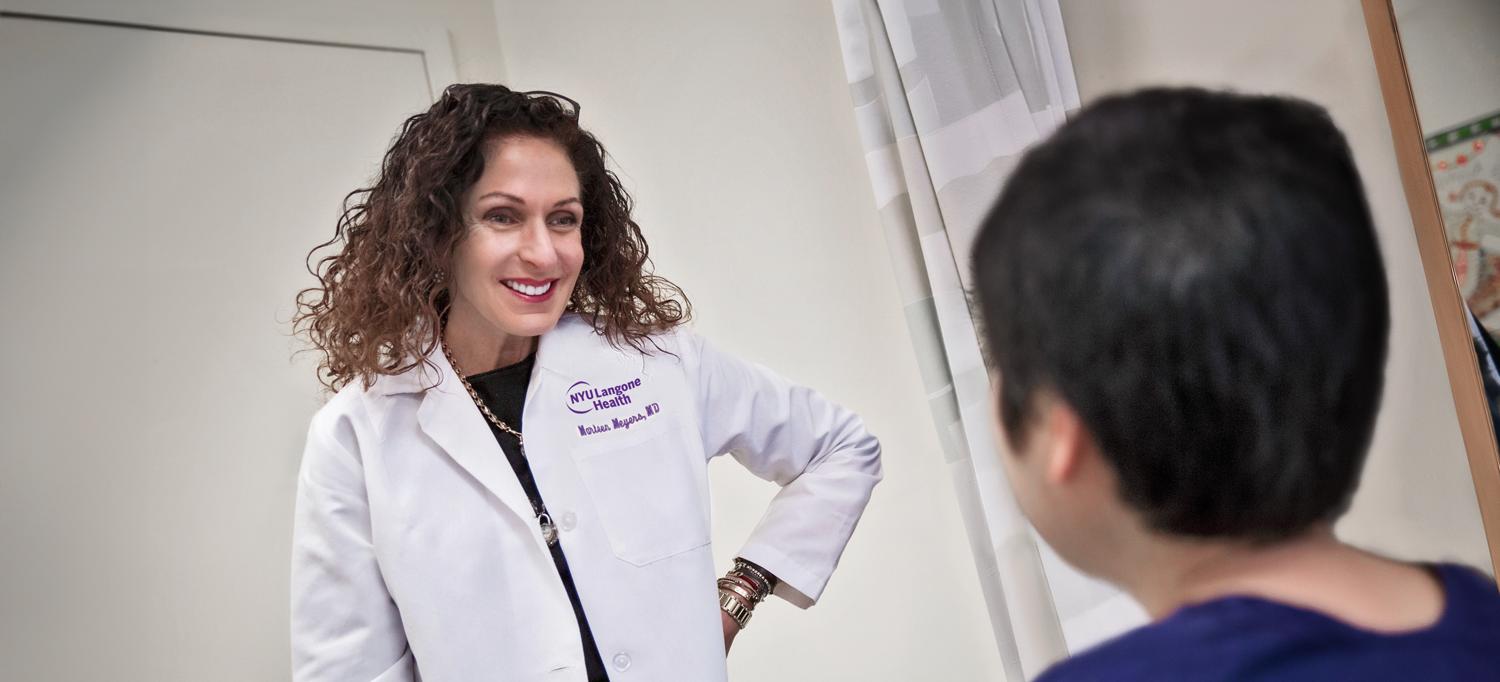
Perlmutter Cancer Center oncologists, including Dr. Marleen I. Meyers, offer suggestions for dealing with fatigue brought on by cancer treatment.
credit: NYU Langone staff
Side effects of cancer treatment, depending on the type of therapy used, can range from hair loss and rashes to life-threatening conditions such as decreased blood cell counts and fever. One underreported side effect—fatigue—is beginning to become more recognized, with doctors focused in particular on how patients who participate in clinical trials deal with it.
“Fatigue historically has not been a side effect that we as oncologists have been highly concerned about,” said Marleen I. Meyers, MD, director of the Survivorship Program at NYU Langone Health’s Perlmutter Cancer Center. “But as patients are living longer and doing better with their cancer, it is emerging as a major quality-of-life issue.”
Fatigue as a side effect of cancer treatment in clinical trials was a topic of discussion at the 2023 European Society for Clinical Oncologists (ESMO) Congress, where some physicians expressed concern that fatigue in patients participating in clinical trials is not being assessed adequately.
“Fatigue is real for patients,” said Bhavana Pothuri, MD, medical director of the Clinical Trials Office and director of gynecologic oncology clinical trials at Perlmutter Cancer Center. “Given that quality of life is something that is very important for patients, it is imperative for physicians to think about fatigue as a problem and try to understand what causes it and how to mitigate it to best help them. The current patient-reported outcomes (PRO) measures in clinical trials do not capture the severity of fatigue well. We need to do better in this arena.”
Dr. Pothuri suggested incorporating PRO-CTCAE—a PRO measurement system developed to evaluate symptomatic toxicity in patients on cancer clinical trials as a companion to the Common Terminology Criteria for Adverse Events (CTCAE). Patients using PRO-CTCAE to characterize the frequency, severity, and interference of fatigue could help physicians better understand the impact of fatigue.
The level of fatigue a patient experiences may depend on the type of treatments they are receiving. For example, low-level fatigue is a common side effect of PARP inhibitors, which are used as first-line maintenance treatments in gynecologic malignancies, as well as treating breast, prostate, and pancreatic cancers.
“Fatigue is a common complaint with PARP inhibitors,” said Dr. Pothuri, who also is a professor in the Departments of Obstetrics and Gynecology and Medicine at NYU Grossman School of Medicine. “Because PARP inhibitors are used as maintenance therapy to prevent cancer from relapsing or recurring, managing fatigue is an important consideration for patients who are taking these medicines daily.”
Dr. Pothuri said in addition to exercise, psychostimulants can also be helpful if a therapy causes severe fatigue and patients need to be alert for important events.
Fatigue can be a side effect of the cancer itself or its treatment. Dr. Meyers said it is also important for physicians to determine causes of fatigue that are not necessarily related to the cancer or the treatment.
“We need to make sure the person is not depressed and that there are no other etiologies, such as other medications, for the fatigue,” said Dr. Meyers, who also is a clinical professor in the Department of Medicine at NYU Grossman School of Medicine. “We need better paradigms to assess fatigue and to address it early in the trajectory so that we can be proactive about addressing it.”
Dr. Meyers recommends that doctors make sure patients know that fatigue is a potential side effect of cancer treatment: doing so may make it easier for them to deal with their fatigue. Deconditioning, the decline in fitness and physical function as a result of cancer or treatment, increases the risk of fatigue and can be treated with increased physical activity. Patients should inform their physician if they have increasing fatigue as soon as possible so it can be addressed early in the course of treatment.
If a person with cancer is not familiar with how to exercise and is not physically active or is deconditioned, Dr. Meyers refers them to rehabilitation for evaluation so that they can participate in a program and learn to exercise and to be more active.
“If there are no other reasons for fatigue other than treatment, and once we have ruled out anemia, thyroid disorders, depression, or anxiety—other causes of fatigue that can be addressed separately—then we are in the scenario where rehab can be very helpful in getting people more active and hopefully improve their symptoms from fatigue,” Dr. Meyers said. “Exercise is an excellent antidote for fatigue in many instances for people who can exercise.”

